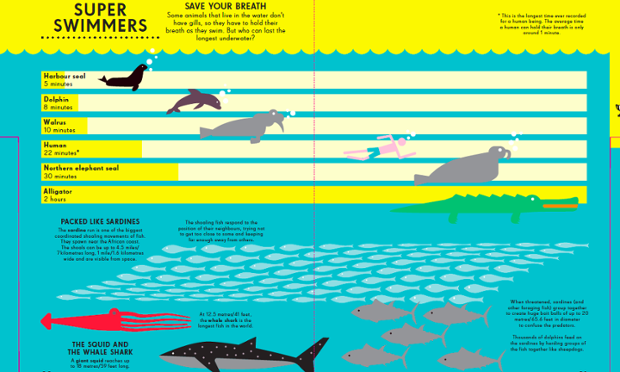The Digital Notebook is a space to hold your thoughts, questions, and growing understanding throughout this Unit. You will be able to access it from every Module. Use The Digital Notebook to jot your thinking, take notes, or as a space to develop your writing. You can print and export it anytime, and at the end of lesson 8 you’ll be reminded to save a copy for yourself.
Lights On! Ike Hoover Electrifies the White House by Cynthia Simmelink Becker

A visualisation from the infographic book for children, Animal Kingdom book which will be published in April. Illustration by Nicholas Blechman
When my daughter was three and out for a walk on an autumn day, she pointed at a spider’s web and explained what it was. “Daddy, it’s a website,” she said. It was a visual way to describe a word she had heard but didn’t yet understand. And information graphics and visualisations give us a method to do the reverse: use images to describe a story in a way that we can understand. Read More
| Cookie | Duration | Description |
|---|---|---|
| cookielawinfo-checkbox-analytics | 11 months | This cookie is set by GDPR Cookie Consent plugin. The cookie is used to store the user consent for the cookies in the category "Analytics". |
| cookielawinfo-checkbox-functional | 11 months | The cookie is set by GDPR cookie consent to record the user consent for the cookies in the category "Functional". |
| cookielawinfo-checkbox-necessary | 11 months | This cookie is set by GDPR Cookie Consent plugin. The cookies is used to store the user consent for the cookies in the category "Necessary". |
| cookielawinfo-checkbox-others | 11 months | This cookie is set by GDPR Cookie Consent plugin. The cookie is used to store the user consent for the cookies in the category "Other. |
| cookielawinfo-checkbox-performance | 11 months | This cookie is set by GDPR Cookie Consent plugin. The cookie is used to store the user consent for the cookies in the category "Performance". |
| viewed_cookie_policy | 11 months | The cookie is set by the GDPR Cookie Consent plugin and is used to store whether or not user has consented to the use of cookies. It does not store any personal data. |